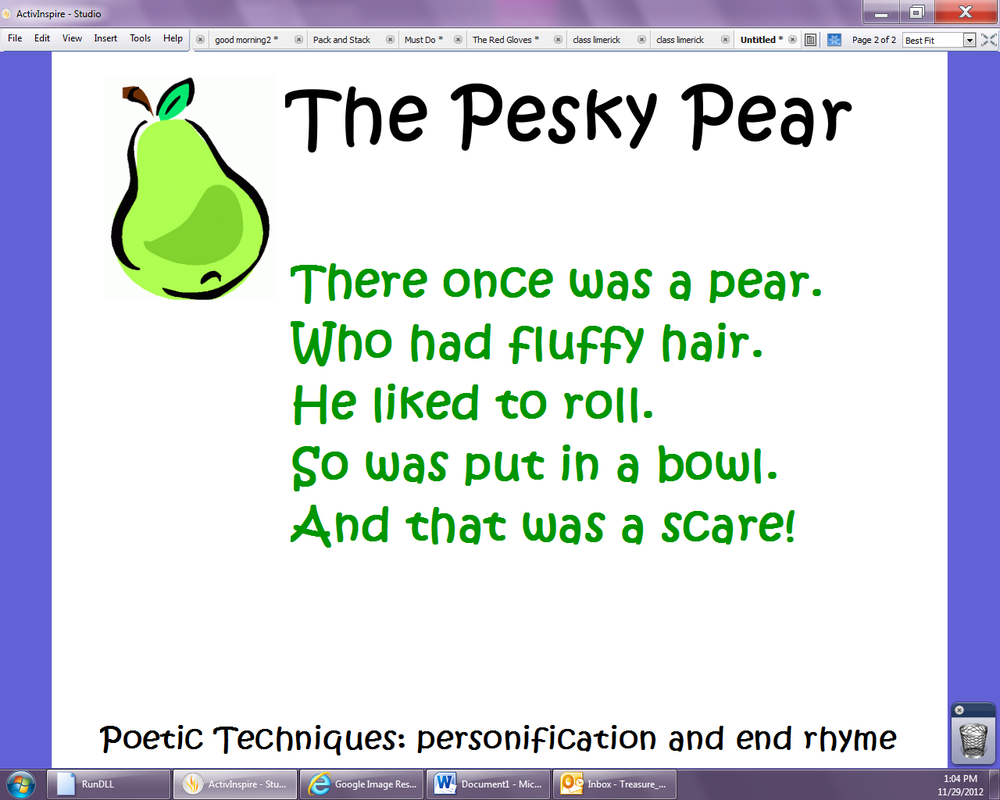
5 TIPS FOR WRITING A LIMERICK
A limerick poem is a short, funny (goofy!) poem that’s quick and easy to write. Here are some tips to get you started writing one — and some limericks from our Power Poets for inspiration:
- Where’d it Come From? Well, no one knows for sure but most people believe that the term “limerick” came from either the city or County of Limerick in Ireland. The English poet Edward Lear popularized the limerick form, but he didn’t create the term “limerick.”
- Nonsense makes Sense. Limerick poems are also called “nonsense” poems because they tell a story that is blunt and humorous with quirky or vulgar words that don’t necessarily make sense. Feel free to make up your own words (Shakespeare did it all the time!) just as long as their meaning is implied.
- First Impressions are Important. The first line sets up the character(s) and setting of the poem so the reader knows right away who/what the story is about.
- Line and Rhyme. Only five lines long, limerick poems have an AABBA rhyme scheme, which means the first, second, and last lines rhyme while the third and fourth lines rhyme. Pretty simple, right?
- Make it Bouncy. Musicality plays a huge role in limerick poems, as they have a bouncy tune when read out loud. The first two lines have eight beats while the third and fourth have six, and the last line again has eight. Many children’s nursery rhymes are limericks because their bouncy rhythm makes them easy to recite. Remember “Hickory Dickory Dock?” Yup, that’s a limerick.
There Once Was a Man from Nantucket
Anonymous
There once was a man from Nantucket
Ran away with a man
And as for the bucket, Nantucket.


Ran away with a man
And as for the bucket, Nantucket.

